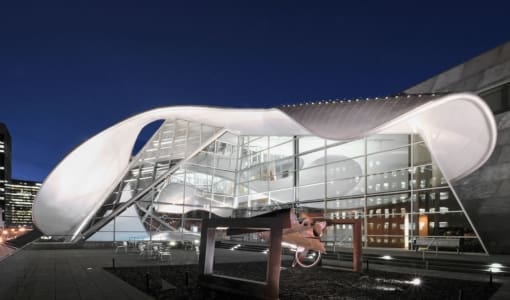PREWEATHERED PATINA ON ZINC FOR INTERIOR OR EXTERIOR APPLICATIONS
Hunter Zinc is a custom-patinated zinc sheet offering a limestone-inspired tonality and a durable alternative to painted surfaces. Originally designed for the Hunter Museum in Chattanooga, Tenn., this preweathered material combines a variegated matte finish with lightweight versatility, making it ideal for facades, panel systems, and artistic designs. Its refined appearance seamlessly integrates into both contemporary and traditional architectural styles.


























 PHOTO ©️ Parrish Ruiz de Velasco (parrch.com)
PHOTO ©️ Parrish Ruiz de Velasco (parrch.com)



 © Fedora Hat Photography
© Fedora Hat Photography Photo by Andre Sigur | ARKO
Photo by Andre Sigur | ARKO





 Ɱ, Creative Commons Attribution-Share Alike 4.0 International license, edited.
Ɱ, Creative Commons Attribution-Share Alike 4.0 International license, edited.

